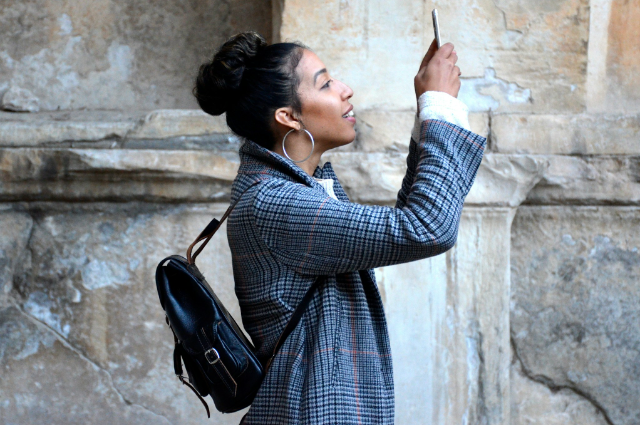
Photo by ANGELA FRANKLIN on Unsplash
Social media has become an integral part of our lives, revolutionizing how we communicate, share information, and interact with the world. Platforms like Facebook, Twitter, Instagram, and TikTok have made it possible for people to connect across continents, fostering relationships and communities that transcend geographical boundaries. However, as much as social media has bridged gaps, it has also been criticized for creating divides. This article explores the dual role of social media in connecting people and amplifying divisions, examining its impact on society.
The Power of Connection
One of the most significant benefits of social media is its ability to connect people. Before the advent of social media, maintaining long-distance relationships was challenging, and finding communities with shared interests often required significant effort. Social media platforms have changed this dynamic by providing easy and instant communication channels.
Connecting Families and Friends
For many, social media serves as a lifeline to stay in touch with family and friends. Whether through messaging, video calls, or sharing updates, social media helps maintain relationships that might otherwise fade due to distance. Grandparents can see their grandchildren grow up through photos and videos, friends can maintain their bonds despite living in different cities or countries, and people can reconnect with long-lost acquaintances.
Building Communities
Social media has also been instrumental in building communities. Niche groups and communities have flourished on platforms like Facebook, Reddit, and Discord. These communities allow people with shared interests, hobbies, or experiences to connect, support each other, and share knowledge. For instance, support groups for mental health, chronic illnesses, or addiction provide safe spaces for individuals to seek help and advice, reducing feelings of isolation.
Amplifying Voices
Social media has democratized information dissemination, allowing anyone with an internet connection to share their voice and reach a global audience. This democratization has been particularly empowering for marginalized groups and social movements. Campaigns like #MeToo, Black Lives Matter, and climate change activism have gained momentum and global attention through social media, highlighting issues that might have otherwise remained underrepresented in traditional media.
The Dark Side of Social Media
While social media has undeniably connected people, it has also been criticized for creating and amplifying divides. The very algorithms designed to keep users engaged can contribute to echo chambers, polarization, and misinformation.
Echo Chambers and Polarization
Social media platforms use algorithms to tailor content to individual users' preferences, ensuring that users see more of what they like and engage with. While this personalization keeps users engaged, it also creates echo chambers where people are exposed primarily to information and opinions that reinforce their existing beliefs. This can lead to increased polarization, as individuals become less exposed to diverse perspectives and more entrenched in their views.
Spread of Misinformation
The rapid spread of misinformation is another significant issue associated with social media. False or misleading information can spread quickly on these platforms, often reaching large audiences before it can be debunked. The spread of misinformation can have serious consequences, from influencing elections to affecting public health during crises like the COVID-19 pandemic. Social media companies have implemented fact-checking measures and flagged false information, but the challenge remains substantial.
Cyberbullying and Mental Health
Social media has also been linked to negative mental health outcomes, particularly among younger users. Cyberbullying, harassment, and the pressure to present a curated, perfect life can contribute to anxiety, depression, and other mental health issues. The anonymity provided by some platforms can embolden individuals to engage in hurtful behavior without facing real-world consequences.
Balancing the Benefits and Risks
Given the dual role of social media in bridging gaps and creating divides, the challenge lies in maximizing its benefits while mitigating its risks. This requires a multifaceted approach involving users, platforms, and policymakers.
Digital Literacy and Critical Thinking
One way to address the challenges of social media is through digital literacy and critical thinking education. Users need to be equipped with the skills to navigate social media responsibly, recognizing misinformation, understanding the implications of echo chambers, and engaging in respectful online discourse. Schools, communities, and organizations can play a crucial role in promoting digital literacy and critical thinking.
Platform Responsibility
Social media platforms have a significant responsibility in shaping the online environment. Companies like Facebook, Twitter, and Instagram must continue to develop and implement policies that reduce the spread of misinformation, protect user privacy, and promote healthy online interactions. This includes refining algorithms to prioritize credible information, enhancing content moderation practices, and providing users with more control over their online experiences.
Regulatory Measures
Governments and regulatory bodies also have a role to play in ensuring social media platforms operate in the public interest. This might involve implementing regulations that hold platforms accountable for harmful content, ensuring transparency in algorithmic decision-making, and protecting user data. However, regulatory measures must balance the need for oversight with the protection of free speech and innovation.
Conclusion
Social media is a powerful tool that has the potential to both connect and divide. Its ability to bridge gaps, build communities, and amplify voices is undeniable, but so is its capacity to create echo chambers, spread misinformation, and negatively impact mental health. As we continue to navigate the digital age, it is essential to recognize and address these dualities. By promoting digital literacy, holding platforms accountable, and implementing thoughtful regulatory measures, we can harness the positive aspects of social media while mitigating its risks. Ultimately, the goal is to create an online environment that fosters connection, understanding, and positive social change.
